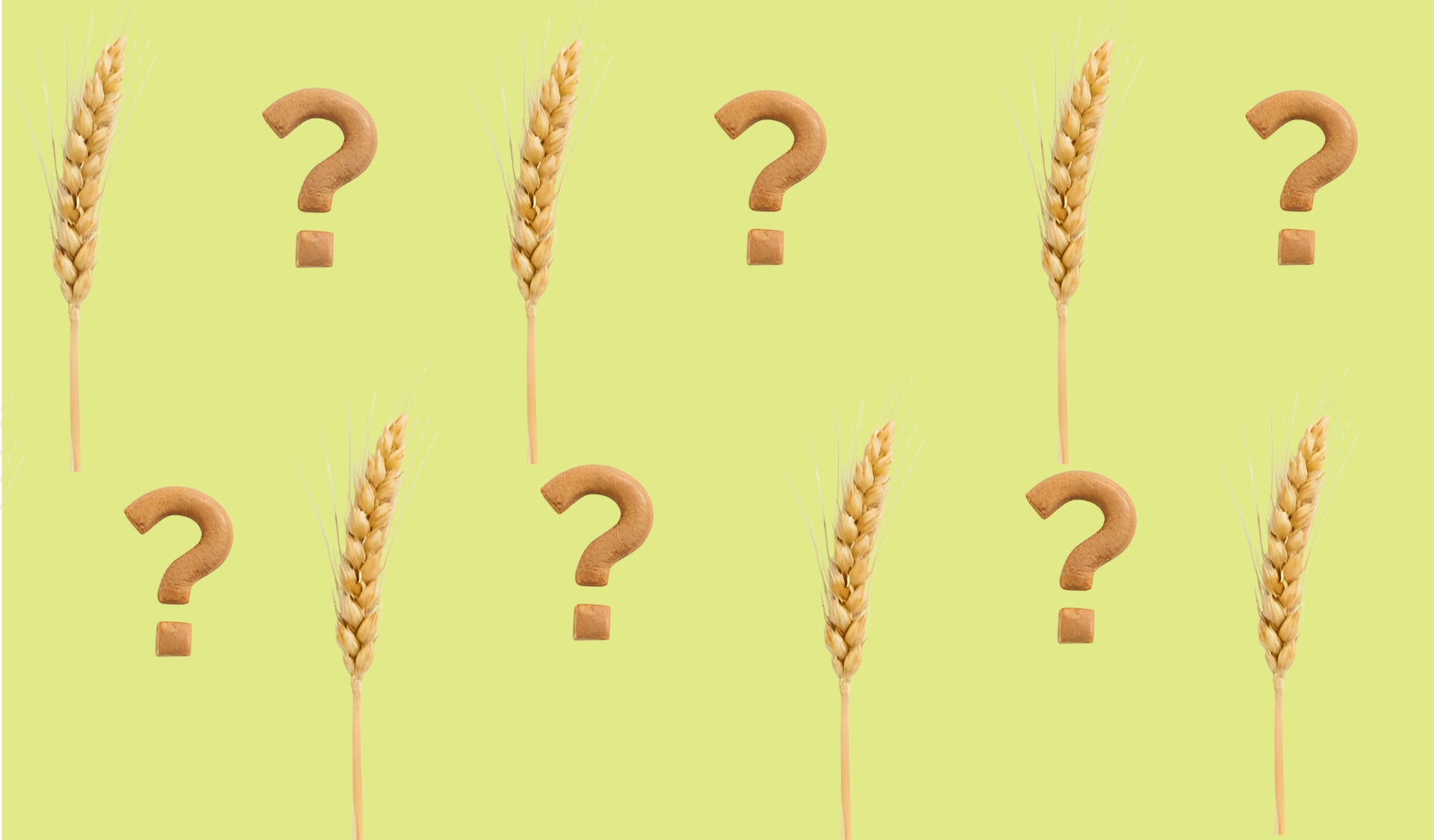Key Takeaways
- Celiac disease, gluten intolerance, and wheat allergies are not the same.
- Celiac requires a lifelong gluten-free diet, while someone with a wheat allergy may be able to tolerate gluten in other grains. Someone with a gluten intolerance may have more flexibility with gluten compared to someone with celiac disease.
- Accurate diagnosis is crucial to avoid unnecessary food restriction.
Confused about celiac disease, gluten intolerance, and wheat allergy? Learn the key differences, symptoms, diagnosis methods, and how to manage each condition.
Wheat and gluten can cause a range of digestive issues for many people—but not all gluten-related conditions are the same. Some people have a wheat allergy, others have celiac disease, and some deal with gluten intolerance or sensitivity. While these conditions can share similar symptoms like bloating, fatigue, or belly aches, they’re actually very different in how they affect the body, how they're diagnosed, and how they’re managed. Knowing the difference is key to getting the proper diagnosis and feeling your best.
Wheat Allergy: An IgE-Mediated Response
A wheat allergy is an immune system response where the body mistakes proteins found in wheat—such as gliadins, glutenins, albumins, and globulins—as harmful invaders. This type of reaction is IgE-mediated, meaning it involves the production of specific antibodies that trigger the release of histamine and other inflammatory chemicals.
Common Wheat Allergy Symptoms Include:
- Hives or eczema
- Nausea, vomiting, or diarrhea
- Abdominal pain and cramping
- Wheezing, sneezing, or trouble breathing
- Severe reactions may lead to anaphylaxis
Interestingly, wheat allergies can also be triggered by inhaling wheat particles, a condition known as baker’s asthma. Those affected may not react when eating cooked wheat, but they can experience respiratory symptoms from raw wheat flour exposure.
Diagnosis Used to Confirm a Wheat Allergy:
- Blood tests and skin-prick testing
- Oral food challenge under medical supervision
Treatment For Wheat Allergy Includes:
- Avoiding all wheat-containing foods
- Many rely on certified gluten-free products as a practical solution
- Re-testing may be appropriate, especially in children, as many outgrow the allergy
Celiac Disease: An Autoimmune Condition Triggered by Gluten
Celiac disease is a chronic autoimmune condition in which the ingestion of gluten—a protein found in wheat, barley, and rye—leads to immune-mediated damage of the small intestine. When someone with celiac disease consumes gluten, the body mistakenly targets the intestinal lining. The result? Inflammation and damage to the intestinal villi, which are crucial for nutrient absorption. Over time, this damage can cause significant health problems.
How Celiac Disease Works:
Gluten is broken down into gliadin peptides, which trigger an immune reaction in genetically predisposed individuals (HLA-DQ2 or HLA-DQ8 genes). This leads to inflammation and damage to the intestinal villi, resulting in malabsorption and nutrient deficiencies.
Common Symptoms of Celiac Disease:
- Bloating, abdominal pain, and diarrhea
- Constipation and gas
- Fatigue and brain fog
- Nutrient deficiencies (iron, B12, calcium)
- Lactose intolerance, headaches, and skin rashes
Diagnosis of Celiac Involves:
- Serologic tests (anti-tTG IgA, EMA, DGP antibodies)
- Duodenal biopsy showing villous atrophy and immune cell infiltration
- Genetic testing (HLA-DQ2/DQ8) – not diagnostic, but helpful in ruling out celiac
Important Note: It’s crucial to continue eating gluten before and during testing, or you may get false-negative results.
Celiac Disease Management
- Requires a strict, lifelong gluten-free diet
- Avoid all forms of wheat, rye, and barley
- Even trace amounts of gluten can cause intestinal damage
Gluten Intolerance (Non-Celiac Gluten/Wheat Sensitivity)
Not everyone who reacts to wheat or gluten has celiac disease or a wheat allergy. Some individuals fall into a third category known as a gluten intolerance, non-celiac gluten sensitivity (NCGS) or non-celiac wheat sensitivity (NCWS). This condition occurs when individuals experience symptoms after consuming wheat or gluten, but test negative for both celiac disease and wheat allergy. Unlike celiac disease, there is no intestinal damage, and, unlike wheat allergy, IgE antibodies are not involved. The cause may relate to other wheat components like fructans or amylase-trypsin inhibitors (ATIs), and, therefore, it's important to work with a dietitian who can help you avoid cutting out healthful foods - like gluten-containing grains, for no reason.
Symptoms of Gluten Intolerance / NCWS May Include:
- Abdominal pain, bloating, and gas
- Diarrhea or constipation
- Chronic fatigue
- Headaches, joint pain, and eczema
- Brain fog and mood changes
Diagnosis of Gluten Intolerance:
- This is typically a diagnosis of exclusion -rule out celiac disease and wheat allergy
- Begin a 6-week gluten-free diet
- If symptoms resolve and return after reintroducing gluten, a diagnosis of NCWS can be made
Managing Gluten Intolerance / NCWS Includes:
- Following a gluten-free or wheat-free diet
- Important to get a medical diagnosis—self-diagnosing can lead to unnecessary dietary restrictions
Final Thoughts on Celiac vs Gluten Intolerance vs Wheat Allergy
Understanding the difference between celiac disease, gluten intolerance, and wheat allergy is essential for choosing the right dietary path. While symptoms may overlap, the underlying causes, testing methods, and long-term management strategies are very different. If you suspect a gluten-related disorder, you should consult a healthcare provider before making any unnecessary dietary changes. Need help navigating a gluten-free lifestyle? Check out our Celiac Program for tips on healthy eating, traveling, and avoiding hidden sources of gluten.
Your one-stop hub for celiac education and gluten-free living
- Make confident food choices and understand how to read labels through bite-sized video lessons.
- Follow GI-expert dietitians who've transformed life for 350+ clients
- Stop guessing and start healing with science-based tips and support

















